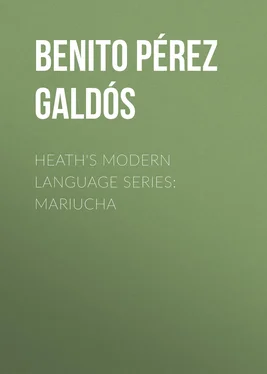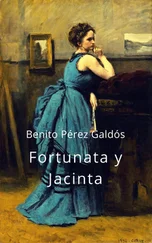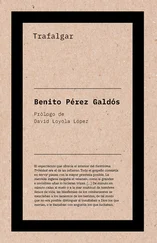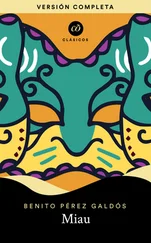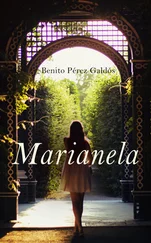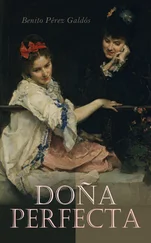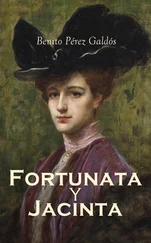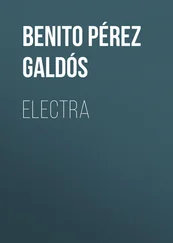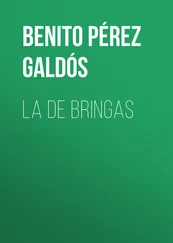Benito Pérez Galdós - Heath's Modern Language Series - Mariucha
Здесь есть возможность читать онлайн «Benito Pérez Galdós - Heath's Modern Language Series - Mariucha» — ознакомительный отрывок электронной книги совершенно бесплатно, а после прочтения отрывка купить полную версию. В некоторых случаях можно слушать аудио, скачать через торрент в формате fb2 и присутствует краткое содержание. Издательство: Иностранный паблик, Жанр: foreign_antique, foreign_prose, Зарубежные любовные романы, на английском языке. Описание произведения, (предисловие) а так же отзывы посетителей доступны на портале библиотеки ЛибКат.
- Название:Heath's Modern Language Series: Mariucha
- Автор:
- Издательство:Иностранный паблик
- Жанр:
- Год:неизвестен
- ISBN:нет данных
- Рейтинг книги:4 / 5. Голосов: 1
-
Избранное:Добавить в избранное
- Отзывы:
-
Ваша оценка:
- 80
- 1
- 2
- 3
- 4
- 5
Heath's Modern Language Series: Mariucha: краткое содержание, описание и аннотация
Предлагаем к чтению аннотацию, описание, краткое содержание или предисловие (зависит от того, что написал сам автор книги «Heath's Modern Language Series: Mariucha»). Если вы не нашли необходимую информацию о книге — напишите в комментариях, мы постараемся отыскать её.
Heath's Modern Language Series: Mariucha — читать онлайн ознакомительный отрывок
Ниже представлен текст книги, разбитый по страницам. Система сохранения места последней прочитанной страницы, позволяет с удобством читать онлайн бесплатно книгу «Heath's Modern Language Series: Mariucha», без необходимости каждый раз заново искать на чём Вы остановились. Поставьте закладку, и сможете в любой момент перейти на страницу, на которой закончили чтение.
Интервал:
Закладка:
21. El tacaño Salomón , comedia en dos actos. Madrid, Teatro Lara, Feb. 2, 1916. (Sub-title, Sperate miseri .)
The scene is the modest home of a Madrid engraver who earns good wages, but is victimized by all who appeal to him for help. Stingy Salomón is sent him by a wealthy brother in Buenos Aires to assist his want if he will reform and acquire thrift. The engraver proves incorrigible, but, through his brother's death, receives the money nevertheless.
The play is of the same type as Celia en los infiernos , but is less interesting and even more improbable. In a way it is a complement to Pedro Minio , which taught the beauties of an open and generous life, while El tacaño Salomón appears to preach thrift. But the author has hard work to become enthusiastic over that virtue, and at the close quite lets it slip away from him. Both Celia and the present play are the work of a man who has despaired of accomplishing any good in society by logical and practical means, and resorts to the illusions of a child dreaming of a fairy godmother.
22. Santa Juana de Castilla , tragicomedia en tres actos. Madrid, Teatro de la Princesa, May 8, 1918.
A picture of the old age and death of Juana la Loca, the daughter of the Catholic Kings, and widow of Philip the Handsome. The Queen's mad passion for Philip is barely mentioned, her figure is idealized, and she is made a symbol of humility, self-effacement, and love for the humble. Closely guarded by a harsh agent of her son Charles V, she escapes for a day to a country village, where she talks in a friendly way with the peasants, discussing their problems with a simplicity which conceals much wisdom. To those who wish to use her name as a standard to restore the power of the common people, she insists that she desires nothing but darkness and silence in which to end her days. She had been suspected of heresy, because she read Erasmus, but the Jesuit Francisco de Borja, a man of saintly life, is with her at her death, and bears witness that her faith is untainted and that she will receive in the bosom of God the reward for her many sufferings.
As far back as 1907 Galdós was deeply interested in the life of this wretched Queen: "No hay drama más intenso que el lento agonizar de aquella infeliz viuda, cuya psicología es un profundo y tentador enigma. ¿Quién lo descifrará?" 14In his interpretation of her last moments, Galdós has made the figure of the Queen vaguely symbolic of present-day Spain, like Laura of Alma y vida . But she embodies still more the soul of the aged author, blind, feeble, living in silence and obscurity, absorbed in contemplation of approaching death.
The construction of the play is flawless, of diaphanous simplicity, the dialog is pure and brief, the characters are delicately outlined in a few sure touches. "A mournful, somber triptych," says Luis Brun of its three acts, "the central panel of which is lit by a ray of light." An atmosphere of serene melancholy broods over this admirable drama, fitting close to the career of a well-poised spirit.
BIBLIOGRAPHICAL NOTE
No definitive critical study has yet been made of any side of Galdós' work. The following list, by no means complete, does not include general histories of Spanish literature, encyclopedia articles or reviews in contemporary periodicals of first performances. The best of the last-named are those by Gómez de Baquero in España moderna . Criticisms dealing only with the novels of Galdós are not cited here.
Leopoldo Alas (Clarín), "Galdós" in Obras completas , tomo I, Madrid, 1912.
L. Antón del Olmet and A. García Carraffa, Galdós , Madrid, 1912. [Contains the most information.]
"El Bachiller Corchuelo" (González Fiol), "Benito Pérez Galdós," in Por esos mundos , vol. 20 (1910, I), 791-807; and vol. 21 (1910, II), 27-56. [Important.]
William Henry Bishop, in Warner's Library of the World's Best Literature , vol. XI, pp. 6153-63.
"El Caballero Audaz" (José María Carretero), Lo que sé por mí , 1ª serie, Madrid, 1915, pp. 1-11.
E. Díez-Canedo, "La Vida del Maestro," in El Sol , Jan. 4, 1920.
Archer M. Huntington, "Pérez Galdós in the Spanish Academy," in The Bookman , V (1897), pp. 220-22.
Rafael de Mesa, Don Benito Pérez Galdós , Madrid, 1920.
Emilia Pardo Bazán, "El Estudio de Galdós en Madrid," in Nuevo teatro crítico , agosto de 1891, pp. 65-74. ( Obras completas , vol. 44.)
B. Pérez Galdós, "Memorias de un desmemoriado," in La esfera , vol. III, 1916 (especially the first two instalments).
B. Pérez Galdós, Prólogo to J. M. Salaverría, Vieja España , Madrid, 1907.
Camille Pitollet, "Comment vit le patriarche des lettres espagnoles," in Revue de l'enseignement des langues vivantes , Feb. 1918 (vol. XXXV).
Camille Pitollet, "Le monument Pérez Galdós à Madrid," in Revue de l'enseignement des langues vivantes , Feb. 1919 (vol. XXXVI).
Luis Ruiz Contreras, Memorias de un desmemoriado , Madrid, 1916, pp. 10, 65-72.
J. M. Aicardo, De literatura contemporánea , Madrid, 1905, pp. 316-50. [A Catholic point of view.]
Leopoldo Alas (Clarín), Galdós , Madrid, 1912. [Already a classic.]
Leopoldo Alas (Clarín), Palique , Madrid, 1893.
Rafael Altamira, De historia y arte (estudios críticos), Madrid, 1898, pp. 275-314.
Rafael Altamira, Psicología y literatura , Madrid, 1905, pp. 155-56 and 192-98.
Andrenio (Gómez de Baquero), Novelas y novelistas , Madrid, 1918, pp. 11-112.
Anonymous, "Benito Pérez Galdós," in The Drama , May, 1911, pp. 1-11 (vol. I).
Azorín, "Don Benito Pérez Galdós," in Blanco y negro , no. 1260 (July 11, 1915).
Azorín, Lecturas españolas , Madrid, 1912, pp. 171-76.
R. E. Bassett, in Modern Language Notes , XIX (1904), pp. 15-17.
Luis Bello, Ensayos e imaginaciones sobre Madrid , Madrid, 1919, pp. 95-129.
Christian Brinton, "Galdós in English," in The Critic , vol. 45 (1904), pp. 449-50.
Manuel Bueno, Teatro español contemporáneo , Madrid, 1909, pp. 77-107.
Barrett H. Clark, The Continental Drama of To-day , New York, 1915, pp. 228-32.
Barrett H. Clark, in Preface to Masterpieces of Modern Spanish Drama , New York, 1917.
José Díaz, Electra , Barcelona, 1901.
Havelock Ellis, " Electra and the progressive movement in Spain," in The Critic , vol. 39 (1901), pp. 213-217.
Havelock Ellis, "The Spirit of Present-day Spain," in The Atlantic Monthly , vol. 98 (1906), pp. 757-65.
A. Gassier, Théâtre espagnol , Paris, 1898, pp. 308-13.
J. Geddes, Jr., Introduction to edition of Marianela , New York, 1903.
Georges Lenormand, "A propos de l' Electra de D. Benito Pérez Galdós," in Revue hispanique , VIII (1901), pp. 567-73.
J. León Pagano, Al través de la España literaria , Barcelona, 1904, II, 77-112.
Eduardo de Lustonó, "El primer drama de Galdós," in Nuestro tiempo , 1902, I, pp. 155-65.
E. Martinenche, " El Abuelo ," in Revue latine , IV, 419-28.
E. Martinenche, "Le théâtre de M. Pérez Galdós," in Revue des deux mondes , 5 mepériode, vol. 32, pp. 815-50 (1906). [This is, as far as it goes, by far the best study yet made of Galdós' drama. It appeared in a Spanish translation in España moderna , no. 210, pp. 118-58.]
Читать дальшеИнтервал:
Закладка:
Похожие книги на «Heath's Modern Language Series: Mariucha»
Представляем Вашему вниманию похожие книги на «Heath's Modern Language Series: Mariucha» списком для выбора. Мы отобрали схожую по названию и смыслу литературу в надежде предоставить читателям больше вариантов отыскать новые, интересные, ещё непрочитанные произведения.
Обсуждение, отзывы о книге «Heath's Modern Language Series: Mariucha» и просто собственные мнения читателей. Оставьте ваши комментарии, напишите, что Вы думаете о произведении, его смысле или главных героях. Укажите что конкретно понравилось, а что нет, и почему Вы так считаете.
